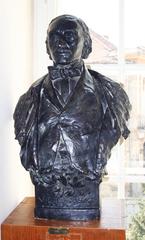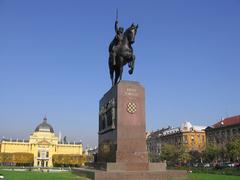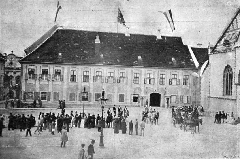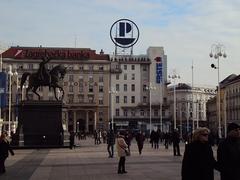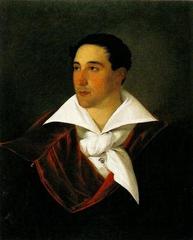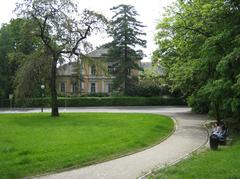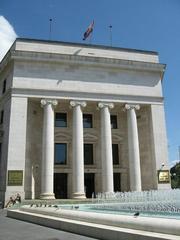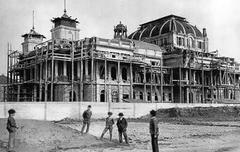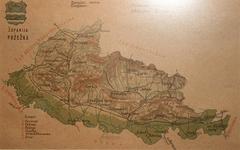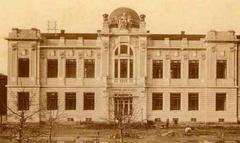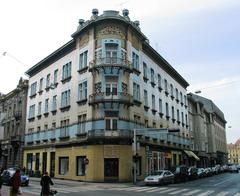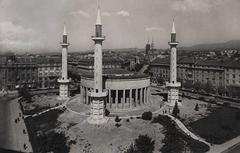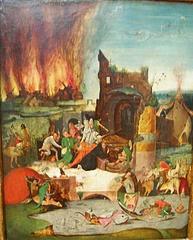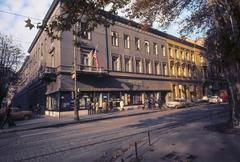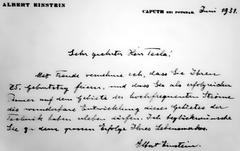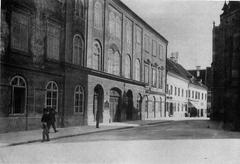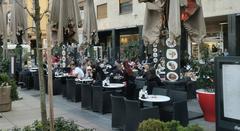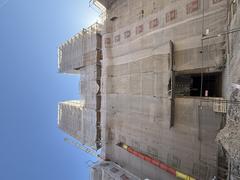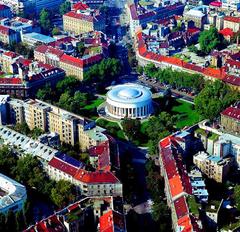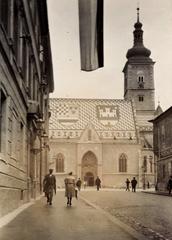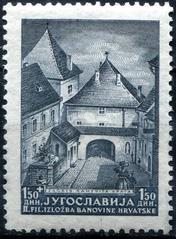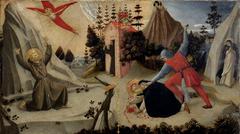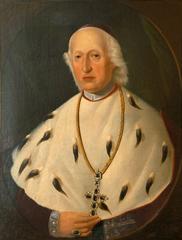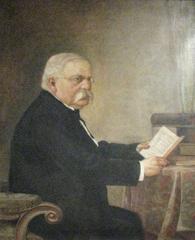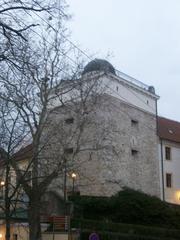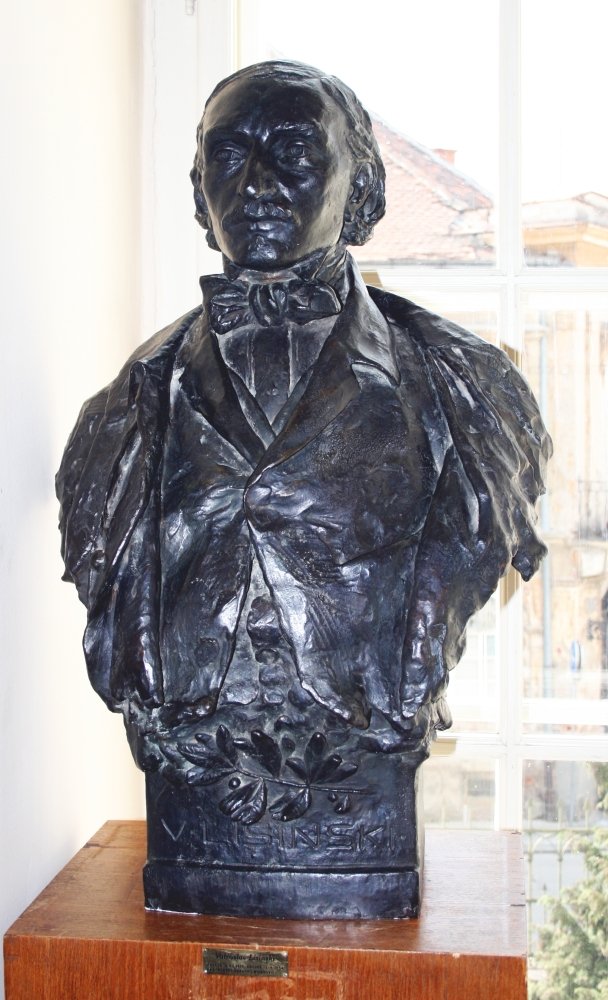
National Home Palace Zagreb: Visiting Hours, Tickets, and Historical Sites Guide
Date: 14/06/2025
Introduction: National Home Palace Zagreb – A Portal to Croatian History
Situated in the storied heart of Zagreb’s Upper Town, the National Home Palace (Narodni dom) is a centerpiece of Croatia’s cultural heritage and a monument to the country’s political awakening. Built in the 19th century during the Illyrian Movement—a pivotal campaign aimed at forging Croatian national identity within the Habsburg Monarchy—the palace has long served as a hub for intellectual discourse, art, and civic gatherings. Its neoclassical design, marked by symmetry and classical ornamentation, mirrors the aspirations of a nation striving for unity and recognition.
Today, visitors can marvel at the palace’s stunning façade and intricately designed interiors, while immersing themselves in a space that has witnessed key moments in Croatia’s journey towards autonomy and cultural renaissance. Whether you’re drawn by history, architecture, or vibrant cultural programming, the National Home Palace offers a rewarding encounter at the crossroads of past and present in Zagreb’s Upper Town. For more details on history, visiting hours, ticketing, and nearby attractions, see the official Croatian Academy of Sciences and Arts (HAZU), Croatia Week, and Britannica.
Table of Contents
- Discover the National Home Palace: Why Visit?
- Origins and Construction
- The Illyrian Movement and the Palace’s Role
- Architectural Evolution and Preservation
- Visiting Information: Hours, Tickets, and Accessibility
- Getting There and Nearby Attractions
- The Palace in Modern Zagreb
- Notable Historical Events and Figures
- Visuals and Multimedia
- Frequently Asked Questions (FAQ)
- Conclusion and Visitor Resources
1. Discover the National Home Palace: Why Visit?
The National Home Palace is not just a relic of the past—it is a living institution that continues to anchor Zagreb’s intellectual, artistic, and civic life. As a visitor, you’ll encounter a site that has shaped Croatian identity and continues to host prestigious events, exhibitions, and festivals. Its strategic location in the Upper Town makes it an essential stop for anyone exploring Zagreb’s historic core.
2. Origins and Construction
Constructed in 1838, the National Home Palace arose during a period of burgeoning Croatian national consciousness. It was envisioned as a central gathering place for intellectuals, artists, and reformers—directly reflecting the needs of a society eager for cultural autonomy. Public donations and the efforts of figures like Ljudevit Gaj, a leader of the Illyrian Movement, brought the palace to life (Croatia Week). The neoclassical façade, with symmetrical lines and stately entrance, signaled both elegance and civic pride.
3. The Illyrian Movement and the Palace’s Role
The palace quickly became the epicenter of the Illyrian Movement, hosting meetings, debates, and cultural events that defined Croatian national identity. The Illyrian Printing House operated here, producing influential newspapers and books that promoted the Croatian language. Symbolic acts, such as the adoption of the Illyrian name for the Croatian language, took place in these halls, solidifying the palace’s role in the campaign for cultural unity (Croatia Week).
4. Architectural Evolution and Preservation
Over time, the palace has undergone several renovations, but key neoclassical features remain. The representative upper courtyard on Opatička Street and the more secluded lower courtyard overlooking Radićeva Street provide architectural harmony and ambiance (Croatia Week). Restoration and conservation efforts, particularly following the 2020 earthquake, have ensured the building’s historical integrity (Facts.net).
5. Visiting Information: Hours, Tickets, and Accessibility
- Visiting Hours: Tuesday to Sunday, 10:00 AM–6:00 PM; closed on Mondays and public holidays.
- Tickets: General admission from 30 HRK (approx. 4 EUR), with discounts for students, seniors, and groups. Buy tickets at the entrance or via the official HAZU website.
- Guided Tours: Available on request—book in advance, especially in peak season.
- Accessibility: The palace is accessible, with ramps and elevators; contact the visitor center for special assistance.
6. Getting There and Nearby Attractions
Address: Opatička 18, Upper Town, Zagreb.
- Directions: From Ban Jelačić Square, take tram lines 12 or 13 to Strossmayerovo šetalište and walk uphill for about 5 minutes.
- Parking: Limited in Upper Town; public transport is recommended.
- Nearby Sites: St. Mark’s Church, Stone Gate, Lotrščak Tower, Museum of Broken Relationships, and local cafes/restaurants.
7. The Palace in Modern Zagreb
Today, the palace houses the Croatian Academy of Sciences and Arts (HAZU) and hosts public exhibitions, lectures, and cultural festivals like Dvorišta (“Courtyards”). During these events, the palace’s courtyards come alive with concerts, art installations, and culinary offerings (Croatia Week). The building stands as a testament to Zagreb’s resilience and ongoing cultural vibrancy.
8. Notable Historical Events and Figures
- Ljudevit Gaj: Illyrian Movement leader and palace resident.
- Ivan Mažuranić & Bishop Strossmayer: Key contributors to Croatian culture and politics.
- Historic Events: Debates on national policy, celebrations, and performances that shaped Croatia’s cultural identity.
9. Visuals and Multimedia
- Virtual Tours: Available via the HAZU website.
- Photography: Allowed in most areas (no flash/tripods during exhibitions).
- Images: Explore the neoclassical façade, ornate interiors, and vibrant courtyards online before your visit.
10. Frequently Asked Questions (FAQ)
Q: What are the visiting hours?
A: Tuesday–Sunday, 10:00 AM–6:00 PM; closed Mondays.
Q: How much are tickets?
A: From 30 HRK (~4 EUR); discounts apply.
Q: Are guided tours available?
A: Yes, book in advance via HAZU.
Q: Is the palace accessible?
A: Yes, with ramps/elevators; contact in advance if you require assistance.
Q: Can I take photos?
A: Generally yes, but restrictions may apply during exhibitions.
Q: What attractions are nearby?
A: St. Mark’s Church, Stone Gate, Lotrščak Tower, and the Museum of Broken Relationships.
11. Conclusion and Visitor Resources
The National Home Palace is a cornerstone of Zagreb’s historical and cultural landscape. Its journey from a cradle of the Illyrian Movement to the home of the Croatian Academy of Sciences and Arts reflects the enduring spirit of Croatian identity and creativity. Whether you’re seeking architectural grandeur, historical insight, or a vibrant cultural experience, the palace delivers an unforgettable visit.
Plan your visit:
- Check visiting hours and events on the official HAZU website.
- Download the Audiala app for audio guides and curated tours.
- Follow local cultural channels for the latest updates.
Embrace the opportunity to connect with Croatia’s past and present at one of Zagreb’s most treasured historical sites (Croatia Week; Britannica).
